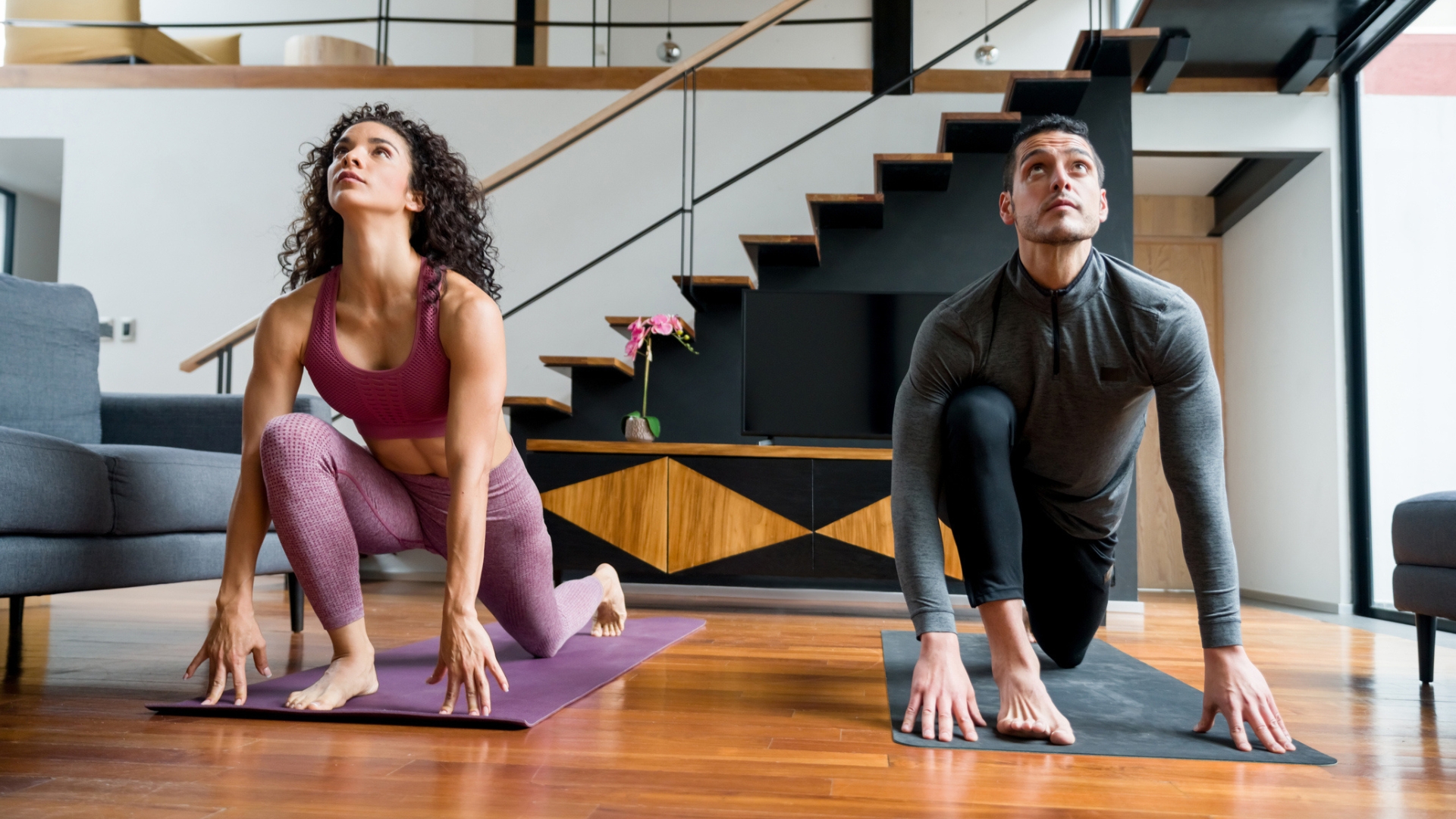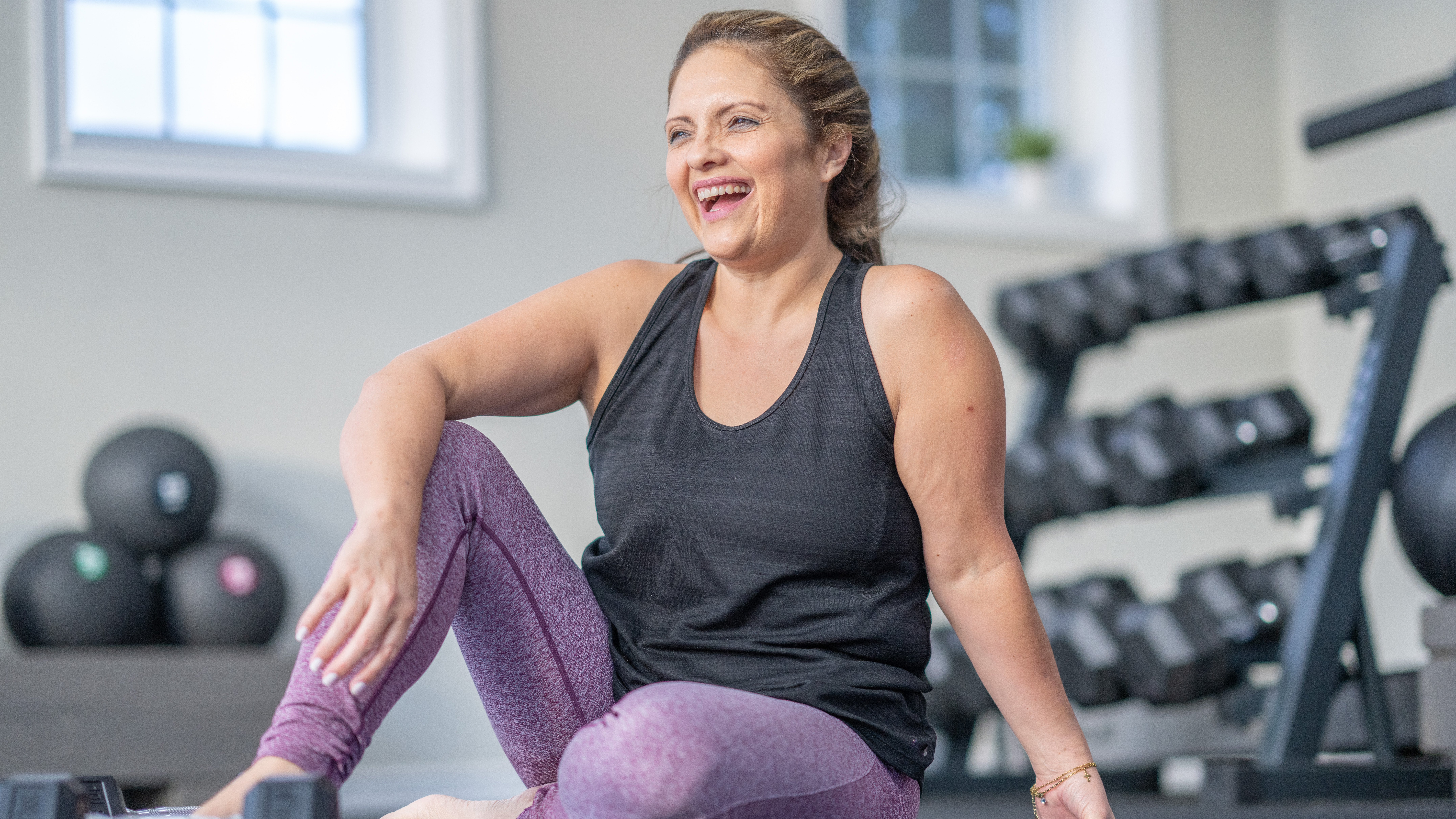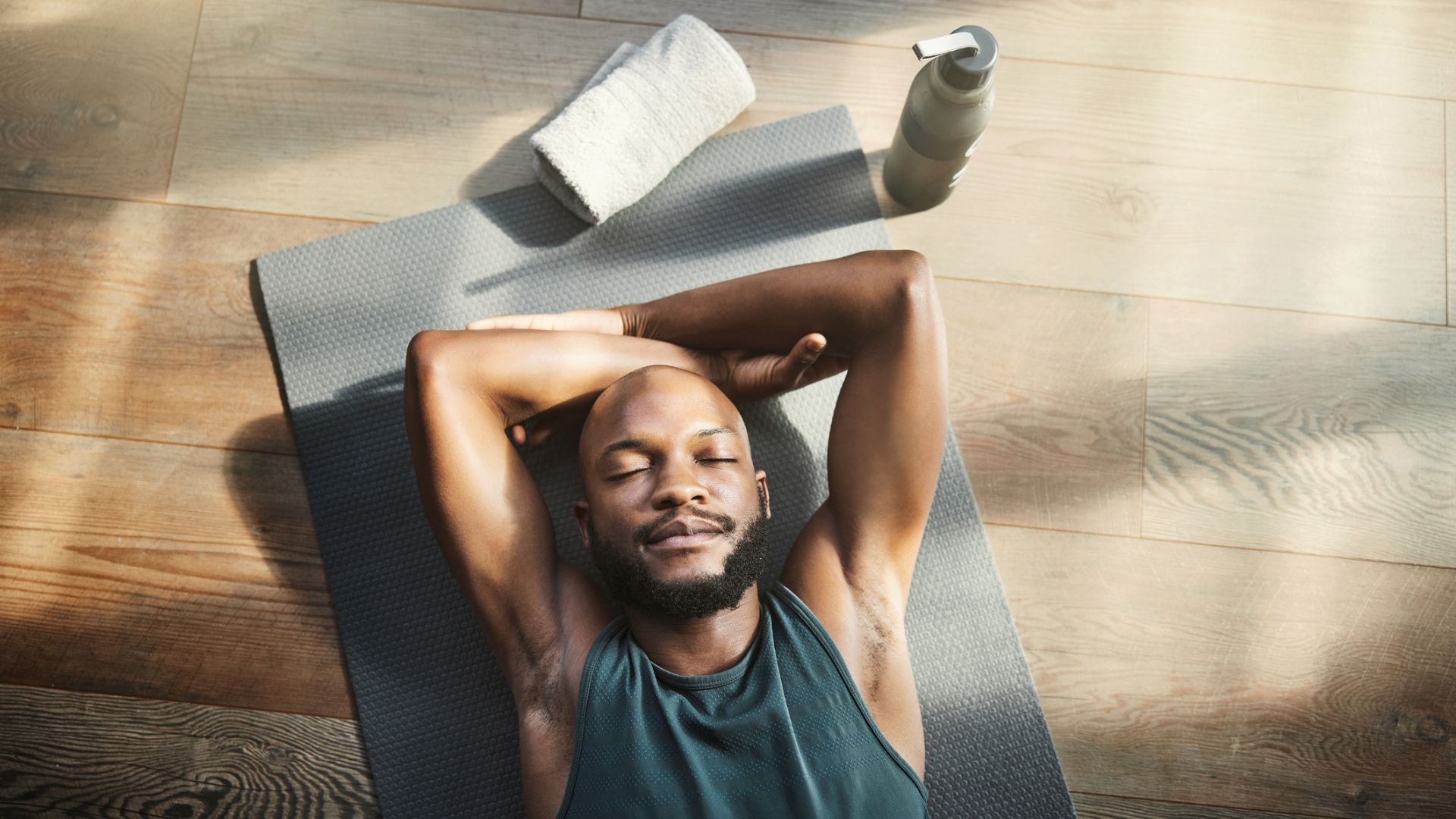Use this 10-minute flow to relieve soreness after exercise
Recover faster with this yoga-inspired routine

If you've started strength training this January, chances are you're getting acquainted with something called DOMS. It stands for delayed-onset muscle soreness and it's a common side effect associated with some types of exercise, typically kicking in 24-48 hours after a workout.
It's caused by activity that your body isn't accustomed to—meaning it can hit the most seasoned lifters and gym newbies alike. For example, you might notice aches and pains after a set of squats or burpees, heavier weights or even a long, vigorous walk.
Either way, the best remedy for sore muscles is to keep moving. But how? If your abs are tender, will a long walk help? If your quads are killing, do you need to jump on an exercise bike? And do you need to get back in the gym to recover faster?
Fit&Well has shared an effective yoga for muscle soreness routine before, so I went hunting for another routine readers can use and landed on personal trainer Lindsey Bomgren's 10-minute active recovery yoga flow. She says it will "stretch every muscle group in your body with an emphasis on the lower back, hips and shoulders.”
It’s quick, requires zero equipment and can be done from the comfort of your own home. Bomgren says she uses this routine once or twice per week to keep her joints and muscles healthy.
How to do the 10-minute recovery flow
Here's an overview of what to expect if you press play on the follow-along video above.
1. Forward fold into thoracic spine rotation
Start by reaching up to the sky, taking a deep inhale, then pulling your elbows back and down on your exhale to pinch your shoulder blades. Reach high again and on your next exhale fold forward at your hips to bring your hands toward the floor. Let your neck and head hang heavy, then in this forward fold position, rotate your upper body to the left and right. Hold each rotation for 5-10 seconds each time.
Get the Fit&Well Newsletter
Start your week with achievable workout ideas, health tips and wellbeing advice in your inbox.
2. Downward-facing dog
After 60 seconds, step your feet back into a downward-facing dog to stretch out the back of your hamstrings and calves while aiming to flatten out your back. If this feels too intense, Bomgren says you can drop down to all fours and sit back into hip circles.
3. Puppy dog stretch
Drop to all fours, reach your hands forward and bring your chest and forehead toward the floor while keeping your hips high. Create as much length as you can between your fingertips and tailbone. You should feel this ease any tension in your lower back and the large latissimus dorsi muscles of your mid-upper back.
4. Low lunge hip rock
Return to all fours and step your left foot outside your left hand. From here, gently rock forward and back, straightening and bending your front leg to alternatively stretch your hamstrings, adductors, hip flexors and groin. After a few rocks, sit into the deep lunge and use your hand to push your knee out to the side.
5. Half-kneeling quad stretch
Bring your right knee forward and lift your torso so your head, hips and right knee are aligned vertically. Tuck your tailbone under to feel a gentle stretch in the quad and hip flexors on your right side. Reach your right hand up and to the left to intensify the stretch. If you can, lift your right foot, take hold of it with your right hand and gently pull it toward your glute to exaggerate the stretch further. Repeat this two-move sequence on the other side.
6. Child’s pose
Return to all fours and widen the position of your knees, then sit your butt back to your heels. Reach as far forward as you can, and inhale and exhale deeply for 60 seconds.
7. Legs-elevated wall stretch
Shuffle your butt close to a wall while lying on your back. Straighten your legs and flex your toes toward you to increase the stretch of the hamstrings and calves.
8. Reclined squat
Bend your knees and place your feet flat on the wall shoulder-width apart to open up your hips. Hold this final pose for as long as feels good.
How this 10-minute yoga flow relieves DOMS
This routine brings together eight yoga-inspired moves that work your flexibility and mobility, targeting your whole body. Bomgren incorporates gentle movement to encourage blood flow and increase oxygen delivery to the muscles.
Rather than just holding static positions, the movement Bomgren brings to some poses also helps clear lactic acid and encourages your body's natural joint-lubrication mechanisms (such as releasing synovial fluid) to help you move more freely.
For best results, use this flow in the morning, especially after a tough workout to speed up recovery and get you feeling ready for your next session sooner.

Sam Rider is an experienced freelance journalist, specialising in health, fitness and wellness. He is also a REPS level 3 qualified personal trainer.
-
 "If I could choose just five moves to future-proof my body, these would be it"—A trainer says this longevity workout will help you build lasting strength and mobility
"If I could choose just five moves to future-proof my body, these would be it"—A trainer says this longevity workout will help you build lasting strength and mobilityBy Lou Mudge
-
 I tried four exercises designed to get rid of shoulder knots and I was surprised by the results
I tried four exercises designed to get rid of shoulder knots and I was surprised by the resultsA yoga instructor recommends this routine for reducing tightness in your upper body
By Alice Porter